I agree Our site saves small pieces of text information (cookies) on your device in order to deliver better content and for statistical purposes. You can disable the usage of cookies by changing the settings of your browser. By browsing our website without changing the browser settings you grant us permission to store that information on your device.
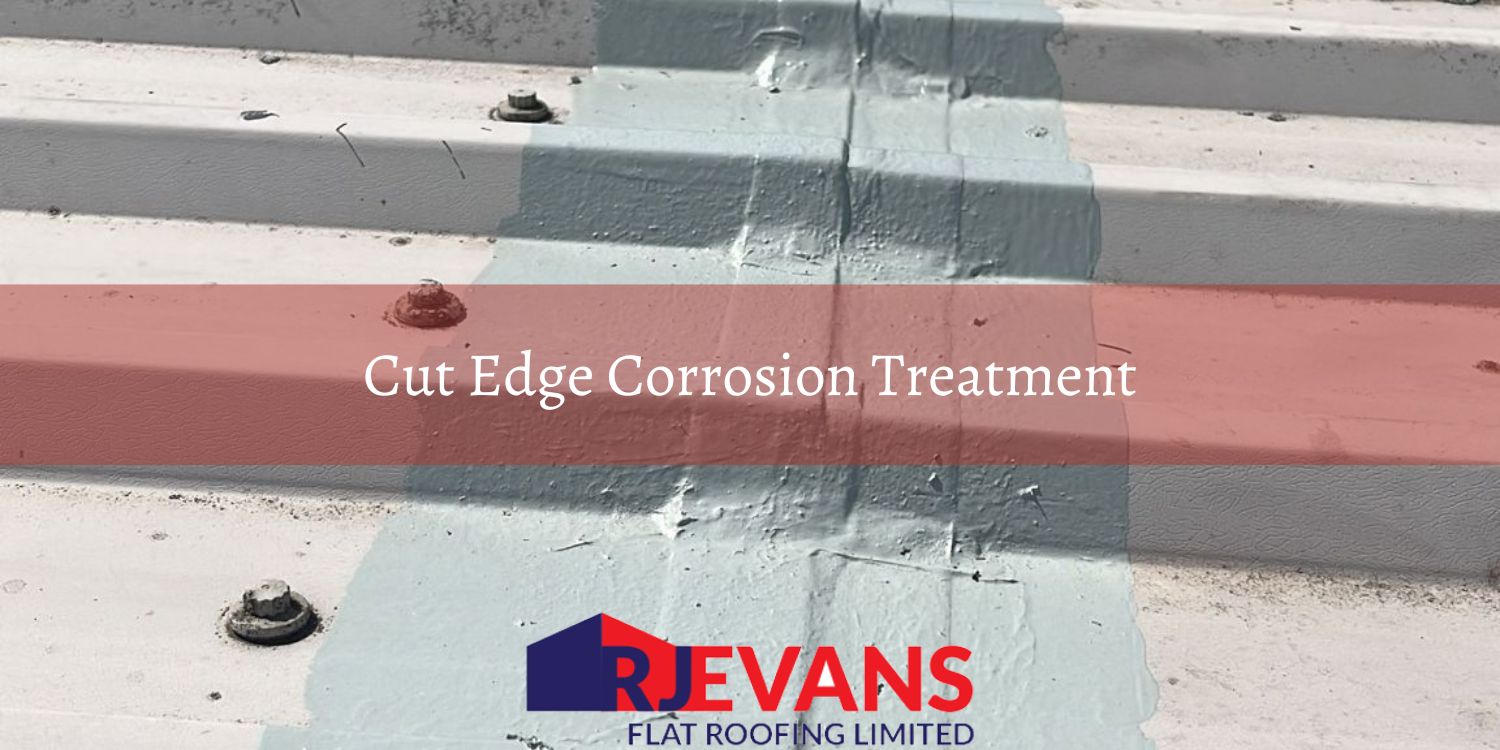
Cut edge corrosion treatment is a protective process often applied to the exposed edges of metal roofing sheets. This is a common issue found in older or weathered metal roofs. Over time, the cut edges of these sheets can become vulnerable to corrosion. The reason for this is exposure to moisture and environmental elements. To prevent further deterioration and extend the life of the roof, cut edge corrosion treatment involves the cleaning, priming, and sealing of these exposed edges with specialised corrosion-resistant coatings or sealants. This treatment not only inhibits rust formation but also enhances the overall longevity and performance of the metal roofing system. This reduces the need for more extensive repairs or replacements in the future. It is an essential maintenance practice for preserving the integrity and aesthetics of metal roofs.
At RJ Evans, we provide expert cut edge corrosion treatment services, offering a reliable solution to prevent further damage to metal roofs and extend their lifespan. Our treatment addresses corrosion at the sheet edges, ensuring your roof remains secure and protected from the elements. For more information or a quote, please get in touch via our contact form or call us now on 01277 375 511. One of our friendly team members will be delighted to assist you.
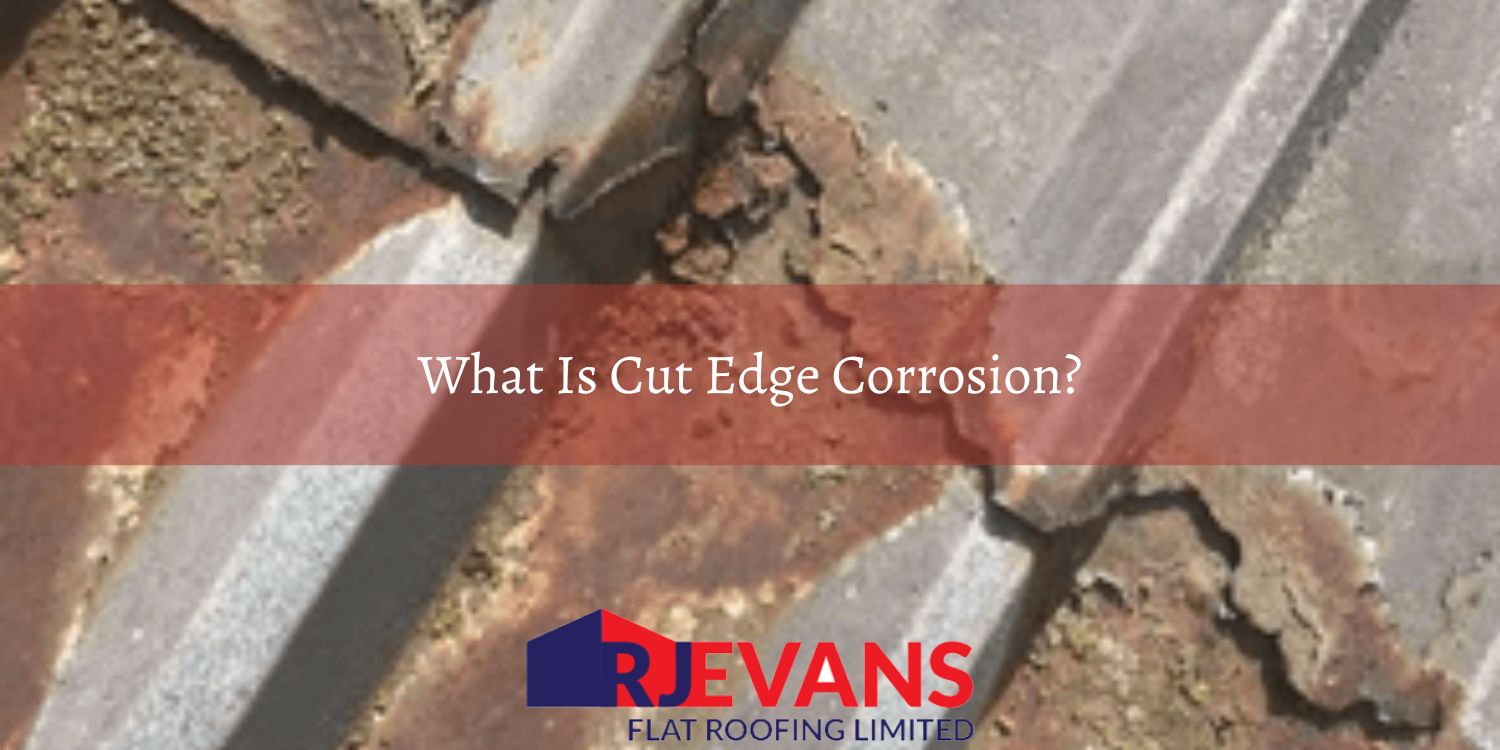
Cut edge corrosion is a specific type of deterioration which predominantly affects steel components, particularly those coil-coated and utilised in roofing structures. Typical examples are vertical and pitched roofs on commercial buildings. The materials most susceptible to cut edge corrosion include those coated with Plastisol, PVF2 and other coil-coated materials.
The fabrication process involves coating both sides of a galvanised steel sheet with a protective layer to guard against environmental damage. Typically, this includes applying a thin liner enamel on the interior side and a composite of primer and a 200-micron thick layer of Plastisol on the exterior. These sheets are then wound into large coils for transportation before being cut and shaped according to specific requirements.
The problem of cut edge corrosion occurs at the point where these coated sheets are trimmed to size. The cutting process leaves the edges of the steel unprotected since the protective coating is applied before the cutting, and these exposed edges do not receive any direct coating. As a result, when these edges are exposed to environmental conditions over time, they become susceptible to localized corrosion. This degradation is specifically referred to as “cut edge corrosion” and is characterized by the deteriorating condition of the steel edges due to their direct exposure to moisture, air, pollutants, and other corrosive elements, leading to a reduction in material integrity and lifespan.
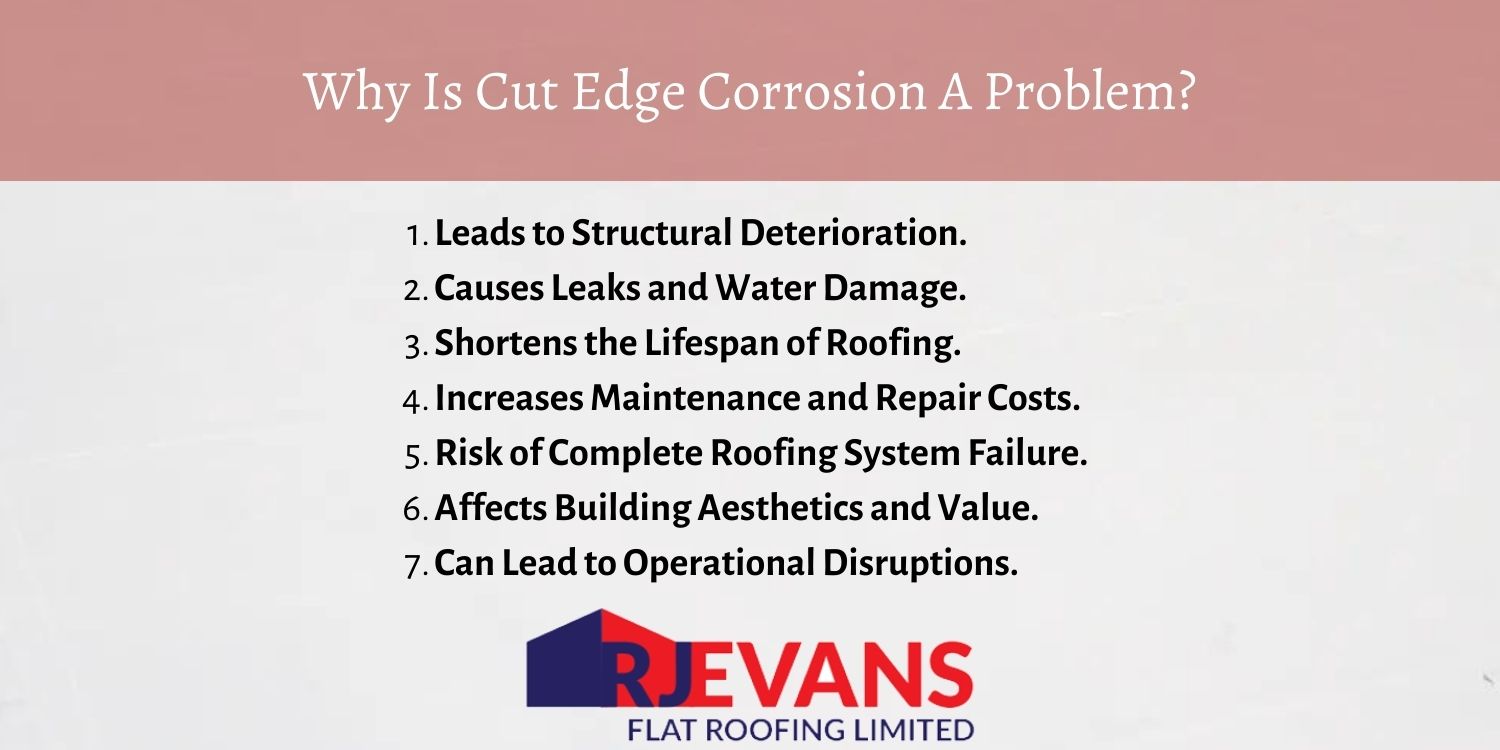
Cut edge corrosion begins at the unprotected edges of metal roofing sheets where the protective coating is absent, initiating a process of oxidation and material degradation. Over time, this localised corrosion undermines the metal's structural integrity, leading to a progressive weakening of the entire roof structure. This deterioration not only compromises the roof's ability to support weight and resist environmental stresses but also increases the risk of catastrophic failures during extreme weather events.
The progression of cut edge corrosion significantly impairs the roofing material's inherent waterproofing capabilities. As the metal corrodes, it develops holes and cracks, through which water can enter, leading to leaks. These leaks, in turn, can cause extensive damage to the building's interior, including damage to ceilings, walls, electrical systems, and inventory, potentially leading to mould growth and the deterioration of indoor air quality.
Normally, metal roofing materials are designed for long-term durability, often lasting several decades. However, the accelerated ageing caused by cut edge corrosion diminishes these materials' resilience against environmental factors, drastically reducing their operational lifespan. This premature ageing means roofing systems are likely to require replacement much sooner than anticipated, foregoing the long-term cost-efficiency typically associated with metal roofing.
The presence of cut edge corrosion necessitates frequent inspections and ongoing maintenance to mitigate its spread and impact. Over time, the costs associated with these activities, including labor, materials for spot repairs, and eventually, the replacement of large sections of roofing, can accumulate, imposing significant financial burdens on property owners.
In its most severe form, unchecked cut edge corrosion can compromise the roofing system to such an extent which it fails entirely. Such a failure might not only require the roof's complete replacement but also expose the building to immediate risks from environmental exposure, including water damage and structural vulnerabilities, leading to a domino effect of building system failures.
The visual manifestation of cut edge corrosion—such as rust streaks and corroded edges—detracts from a building's appearance, affecting its aesthetic appeal and perceived maintenance. This deterioration can negatively impact the property's value, making it less attractive to potential buyers or renters, and possibly reflecting poorly on the businesses housed within.
For businesses operating within affected buildings, the consequences of cut edge corrosion—particularly leaks—can disrupt daily operations. Areas may become unusable, requiring costly temporary fixes or the relocation of critical operations. In addition to the direct costs of these disruptions, businesses may also face indirect losses from downtime, including lost productivity and revenue, potentially damaging customer trust and business reputation.
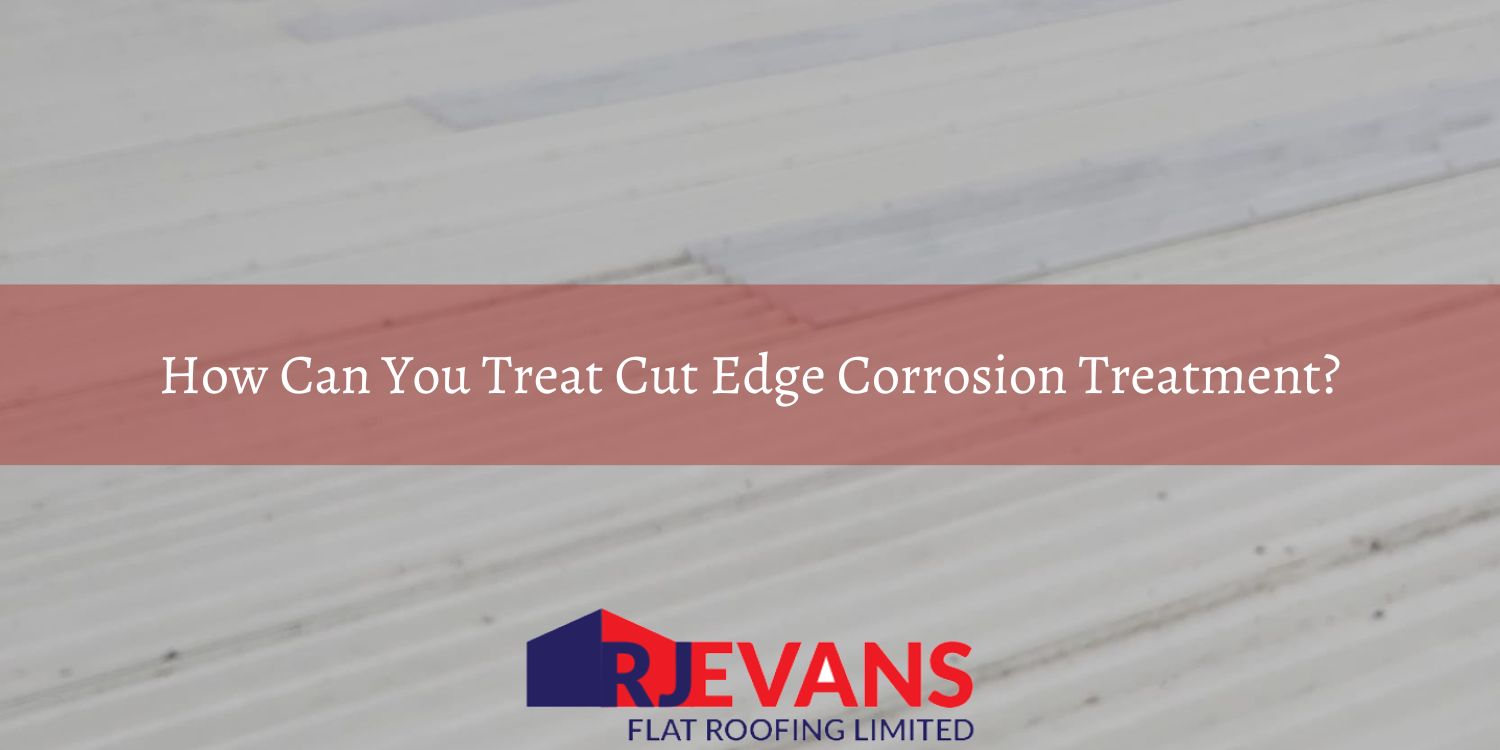
Cut edge corrosion can be effectively treated by first thoroughly cleaning the affected edges of the metal roofing to remove all rust and debris, ensuring that the surface is prepared for the subsequent steps. Next, a rust-inhibiting primer is applied to the clean surface to prevent further oxidation and prepare the metal for the protective coating. Once the primer has dried, a specialist protective coating, often a polyurethane liquid waterproofing system, is applied directly to the primed edges. This waterproofing layer not only re-establishes a moisture barrier but also provides a resilient, elastic coating that withstands environmental changes and thermal expansion, crucial for preventing future corrosion. To enhance the treatment's effectiveness, it's advisable to apply the coating beyond just the immediate edge, covering a broader area to ensure comprehensive protection. Regular inspections and prompt treatment of any initial signs of cut edge corrosion are essential practices for maintaining the integrity of metal roofs and avoiding extensive damage and costly repairs in the future.
Cut edge corrosion treatment is a specialised maintenance procedure designed to address and prevent the corrosion of exposed edges on metal roofing sheets, a condition frequently observed in older or weather-exposed metal roofs. The treatment process begins with a thorough cleaning of the affected areas to remove any existing rust and debris, ensuring that the metal surface is adequately prepared for the subsequent steps. Following cleaning, a rust-inhibiting primer is applied to these vulnerable edges to halt the corrosion process and prepare the surface for a final protective coating system to be applied. This coating or sealant, specifically formulated to resist corrosion, is then applied, effectively sealing the metal from moisture and environmental elements that contribute to corrosion. By creating a durable barrier against the elements, cut edge corrosion treatment significantly enhances the longevity and performance of the metal roofing system, mitigating the need for costly repairs or complete replacements in the future. This preventative maintenance practice is crucial for maintaining both the structural integrity and aesthetic appearance of metal roofs, safeguarding the building against leaks and other damage associated with corrosion.
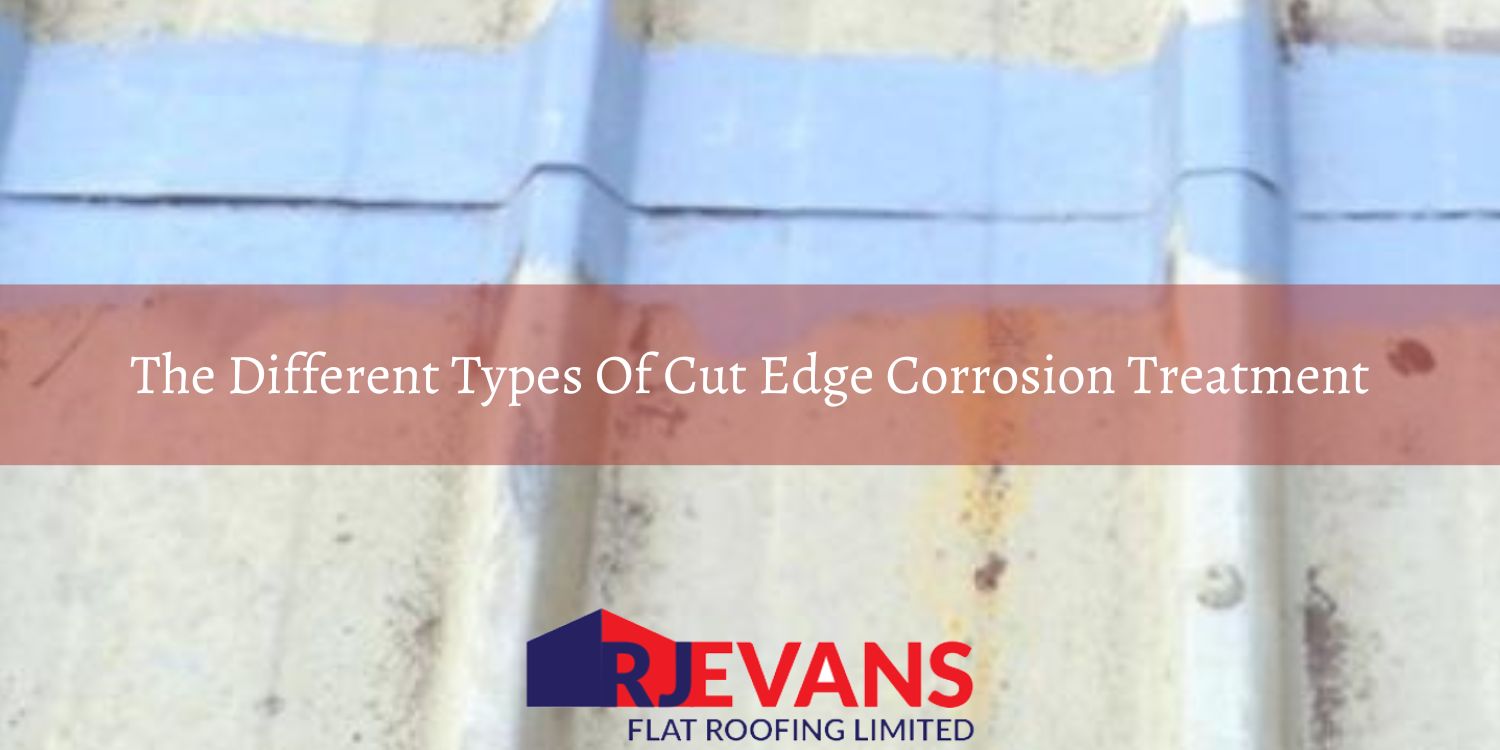
There are different types of cut edge corrosion treatment, each designed to address the issue in various ways depending on the extent of corrosion, the type of metal roofing, and specific environmental conditions. These ways of treating cut edge corrosion vary in their application methods, durability, and protective qualities.
The main types are:
Employing either polyurethane or acrylic-based formulas, these liquid coatings are applied directly to the metal surface after it has been cleaned and any loose rust has been removed and primed. Cut Edge Corrosion UK state, “specialised protective coatings like Desmoflex Fiberfix” which is a liquid polyurethane is one of the most effective ways to treat cut edge corrosion. Liquid coating cure to form a seamless, elastomeric membrane that stretches over the metal's surface, accommodating slight movements without cracking, thereby providing a long-lasting waterproof and weather-resistant seal. Its flexibility and strong adherence make it suitable for a wide range of weather conditions, including areas with high UV exposure, as it maintains its protective properties without degrading, making it an ideal choice for long-term corrosion prevention.
This treatment begins with the application of a rust-inhibiting primer that neutralises existing rust and prevents further corrosion. After the primer has adequately dried, one or more topcoats of paint are applied. These topcoats are specially formulated to create a durable barrier against moisture, UV light, and other environmental elements, effectively sealing the metal surface. This method not only provides a protective layer to prevent future corrosion but also enhances the roof's appearance, offering a variety of colors and finishes to match the building's aesthetic. It's particularly favoured for its cost-effectiveness and simplicity in cases of minor to moderate corrosion, where maintaining or improving the roof's visual appeal is also a concern.
Utilising self-adhesive, butyl rubber tape, this method involves carefully wrapping the tape around the corroded metal edges, creating a tight, waterproof seal that blocks moisture ingress. The tape's high adhesive strength and flexibility allow it to conform to irregular shapes and surfaces, ensuring a comprehensive seal even in hard-to-reach areas. This approach is particularly useful for temporary repairs or in scenarios where traditional liquid treatments are impractical, offering a quick and effective way to halt the progression of corrosion with minimal surface preparation.
For extensively corroded roofs, overcladding presents a robust solution by adding a new layer of metal sheets over the existing roof. These new sheets are pre-coated with corrosion-resistant materials, offering fresh protection against environmental exposure. The overcladding process not only addresses corrosion but also strengthens the roof structure, enhancing its thermal performance and updating its appearance. This method is considered for severe corrosion situations, providing a virtually new roof without the need for a complete tear-off and replacement, thus minimising disruption and waste.
Each of these treatments has its advantages and limitations, and the choice of treatment will depend on various factors, including the severity of the corrosion, cost considerations, and the specific needs of the roofing system. It's important to consult with a roofing professional to determine the most appropriate treatment for a given situation.
Cut edge corrosion significantly undermines the durability and functionality of metal roofing systems, making its repair a priority for maintaining structural integrity. This guide specifically focuses on the repair of cut edge corrosion using a liquid polyurethane (PU) system, a method known for its effectiveness in sealing and protecting affected metal surfaces. From the initial cleaning and preparation of the roof to the application of the PU coating, each step is meticulously outlined to ensure the comprehensive restoration of the roof's protective barrier against the elements, ultimately extending its lifespan and maintaining its aesthetic appeal.
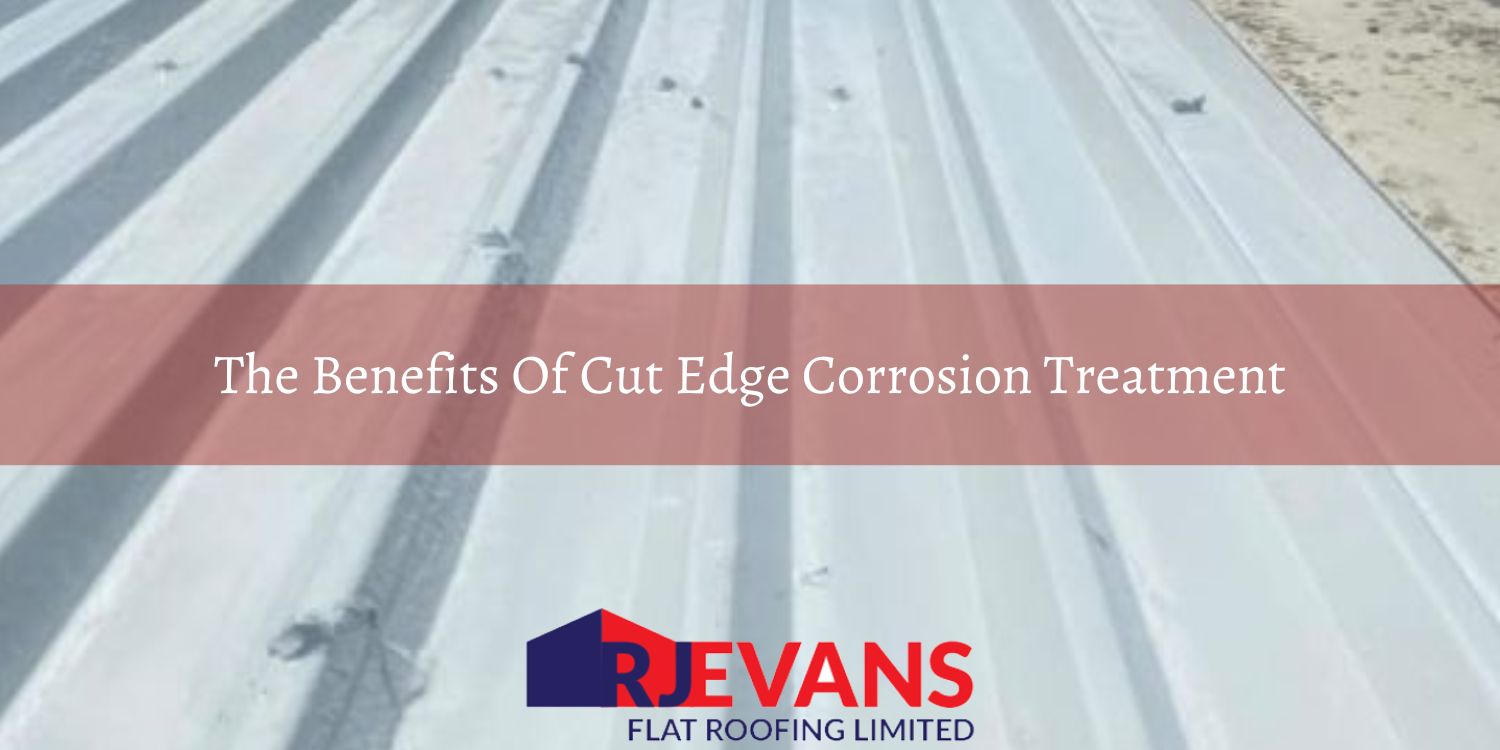
Cut edge corrosion treatment, especially through the application of a liquid polyurethane (PU) system, provides several crucial benefits for the upkeep and functionality of metal roofing systems. These benefits include:
This treatment effectively mitigates the risk of corrosion at the roof sheet edges, a common failure point on metal roofs. By sealing these vulnerable areas, the treatment substantially prolongs the roof's overall service life, preventing the early onset of deterioration which necessitates costly replacements.
Applying a corrosion-resistant coating shields the roof from a myriad of environmental assaults, including moisture, salt, UV light, and extreme temperature changes. This comprehensive protection ensures the roof's structural integrity and appearance remain intact over time, despite exposure to harsh weather conditions.
Although the initial outlay for cut edge corrosion treatment may seem substantial, it is an investment that pays dividends in the form of reduced repair bills and deferred replacement costs. By extending the effective life of the roof, property owners can enjoy greater intervals between major roofing expenditures, translating into significant long-term savings.
Aesthetics play a crucial role in the overall value and perception of a property. Cut edge corrosion treatment helps maintain or even enhance the roof's appearance by preventing unsightly rust and deterioration. This not only contributes to the building's curb appeal but can also positively affect its resale value.
One of the most immediate benefits of this treatment is its ability to prevent water infiltration, a primary cause of leaks that can lead to extensive interior damage. By sealing the roof's edges, the treatment acts as a barrier, keeping the interior dry and safe from water-related damage and the potential for mould and mildew growth.
Opting for cut edge corrosion treatment aligns with sustainable building practices by extending the usable life of roofing materials, thereby reducing waste and the need for new raw materials. This approach not only conserves resources but also minimises the environmental footprint associated with manufacturing and disposing of roofing components.
Regular maintenance, including corrosion treatment, is often a requirement under local building codes and regulations designed to ensure the safety and durability of structures. By adhering to these standards, building owners can avoid potential legal and financial repercussions, ensuring their properties remain up to code and in good repair.
Overall, the benefits of cut edge corrosion treatment underscore its importance as a preventive maintenance strategy, offering long-term protection, savings, and peace of mind for property owners and managers.
• Experienced team of fully accredited roof waterproofing specialists. We have operatives with more than 40 years’ experience.
• We provide a range of FREE quotations and solutions for all projects.
• Fully approved contractor for a great range of systems proven to extend lifespan of corrugated roofing and wall cladding.
• Insurance Backed Guarantees.
• Excellent Customer Support throughout project.
• Rated 5 out of 5 from our previous customers.
If you would like to ask for a quotation to treat cut edge corrosion on metal roof sheets or cladding. Or you need any help or advice about repairing or prolonging the lifespan of metal roofing please get in touch. You can do this through our contact form or call us on 01277 375 511. One of our friendly expert team will be delighted to help you.
Contractors normally charge between £30 and £35 per linear metre supplied and installed. However, this is dependant on the access and deterioration stage of the roof and warranty length required.
If there is a sufficient area a RAL colour match is possible.